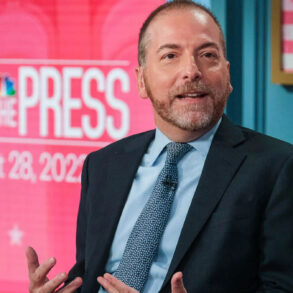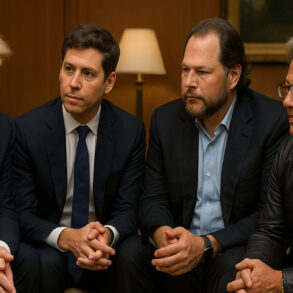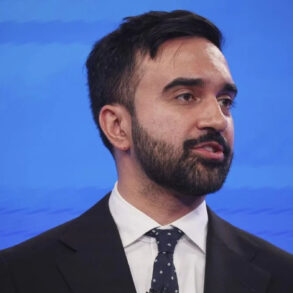Two of Mexico’s most powerful criminal organizations, the Sinaloa cartel and the Jalisco New Generation cartel, are spreading their influence far beyond their home country. Both groups built their empires by trafficking cocaine, heroin, and methamphetamine, while using corruption, bribery, and ruthless violence to secure territory. They are known for their religious shrines, ritual killings, and brutal enforcement of loyalty.
The Sinaloa cartel, once led by Joaquín “El Chapo” Guzmán, has operated for decades across Latin America and has been described as one of the most sophisticated trafficking organizations in the world. Its rival, Jalisco New Generation, is younger but has quickly gained a reputation for cruelty and ambition. As Mike Vigil, a former Drug Enforcement Administration director, explained, “These two cartels are spreading like cancer around the world. The ultimate goal is for one cartel or the other to take dominance over Ecuador.”
Why Ecuador became a target
Ecuador has become central to the cartels’ expansion because of its geography and weak state defenses. The country sits between Colombia and Peru, the two largest cocaine producers on earth. It has long coastlines, well-developed highways, and a dollarized economy that makes money laundering easier.
When Ecuador closed a U.S. military air base in Manta in 2009, hundreds of miles of coastline were left unguarded. According to Fausto Salinas, a former head of Ecuador’s police, “They realized that the weak spot in the region was Ecuador.” The closure allowed traffickers to operate with little interference. Judges, politicians, and security officials were easily bought off, creating a climate where organized crime could thrive.
How the cartels moved in
The Sinaloa cartel began sending emissaries to Ecuador as early as 2003. One of their key allies was Telmo Castro, an Ecuadorian army captain. He used military vehicles to move cocaine from Colombia to Ecuador’s coast. During El Chapo’s trial in the United States, Colombian trafficker Jorge Cifuentes testified that Castro earned about $600,000 per shipment. Mexican pilots would pick up the cocaine from hidden runways.
Along the coast, fishermen were drawn into the trade. Ordinary men who once earned $100 for two weeks of fishing were suddenly offered $30,000 for a single trip. Édison Washington Prado, known as the “Pablo Escobar of Ecuador,” built a network of disguised fishing boats that acted as refueling stations for cocaine-laden speedboats heading north. “He made a bad decision, but we had a lot of needs, hunger,” said Elena Véliz, whose son Jhonny was arrested by U.S. forces after transporting 700 kilograms of cocaine.
After Prado’s arrest and extradition, his allies in the Choneros gang took over the route. Led by Jorge Luis Zambrano, the Choneros aligned with Sinaloa and expanded their control over Ecuador’s prisons and coastal smuggling operations. Zambrano forced smaller gangs into submission, sometimes by grotesque violence. In one prison attack, Choneros members decapitated a rival and “played soccer with his head,” according to police.
Jalisco entered Ecuador after Colombia’s 2016 peace deal with guerrilla groups created new openings in coca-growing territories. They partnered with gangs opposed to the Choneros and sought to break Sinaloa’s dominance. Renato Rivera, an expert on organized crime, explained that “Jalisco wanted to eliminate the Choneros.” Soon Ecuador was caught in the middle of a proxy war between the two most powerful Mexican cartels.
The problems inside Ecuador
The consequences have been catastrophic. Ecuador has shifted from being one of the safest countries in Latin America to one of the most violent. In 2018 the murder rate was under six per 100,000 people. By 2025 it has climbed to nearly 50 per 100,000, more than double Mexico’s rate. Five of the world’s twelve most murderous cities are now in Ecuador.
Violence has taken on the gruesome character of Mexico’s cartel wars. Hundreds have been slaughtered in prison riots. Bodies have been hung from bridges, left in mangroves, or dumped in public streets. Prosecutors, prison directors, and mayors have been assassinated. After police in Manta seized $7 million from a Jalisco member, assassins retaliated by killing officers and even shooting into the casket of one agent during his funeral, killing four more people. “They’re copying certain violent actions that we’ve seen in Mexico,” said former police general Freddy Sarzosa. “The only thing it is causing is terror.”
Ordinary Ecuadorians are being trapped by the chaos. Business owners are extorted through the so-called vacuna, or protection “vaccine,” demanded weekly or even daily. Fishermen are recruited or forced into smuggling. Farmers in banana-producing regions have seen their export networks turned into drug pipelines, with workers killed when protection payments were missed. As one resident said after a massacre in the coastal province of Manabi, “The war has come here.”
Ecuador’s response
President Daniel Noboa, who took office at 36 years old, has made fighting cartels the centerpiece of his government. He has declared a state of emergency, labeled 22 gangs as terrorist organizations, and changed the constitution to allow extradition of top traffickers like José Adolfo Macías, known as “Fito.” When Fito was finally sent to the United States in 2025, Noboa declared, “Good riddance, Fito.”
Noboa has also sought international support. He has requested the reopening of a U.S. military base, partnered with American security contractor Erik Prince to train forces, and asked for cooperation from Brazil and European countries. He wants the Trump administration to classify Ecuador’s gangs as terrorist groups, just as it has done for Mexican cartels.
However, the strategy is controversial. Human rights groups warn of abuses after reports that soldiers detained four boys in Guayaquil who were later found murdered. Catalina Niño of the Friedrich Ebert Foundation argued that “experience has shown that the involvement of the military in internal security leads to a restriction of civil rights.” Others worry Noboa is following the harsh example of El Salvador’s president Nayib Bukele, who built mega-prisons and detained thousands but has been accused of authoritarianism.
Ecuador’s collapse into violence has been sudden and severe. Cocaine profits have corrupted entire regions, turned banana exports into smuggling fronts, and made the port cities of Guayaquil and Durán international trafficking hubs. Families now live under curfews, schools are surrounded by barbed wire, and morgues overflow with unclaimed bodies.
What began as infiltration by two Mexican cartels has now reshaped Ecuador’s society. Local gangs seek legitimacy by copying Mexican tactics, posting violent videos online, and flaunting wealth. Police chiefs describe neighborhoods where children as young as 12 are given guns, houses, and $200 a month to work for the cartels. “They’ve built a parallel state here,” said police chief Roberto Santamaría.
Experts believe the crisis will not be solved quickly. As one Ecuadorian mayor under threat remarked, “In Colombia the state has been waging the war on narco-organisations for 50 years now. And there’s still a lot of work there to be done. In Mexico the fight has been going on for 15 to 20 years. And it’s still not over.”
For Ecuadorians, the question is not whether the violence will end soon, but whether the country can survive long enough to recover.








